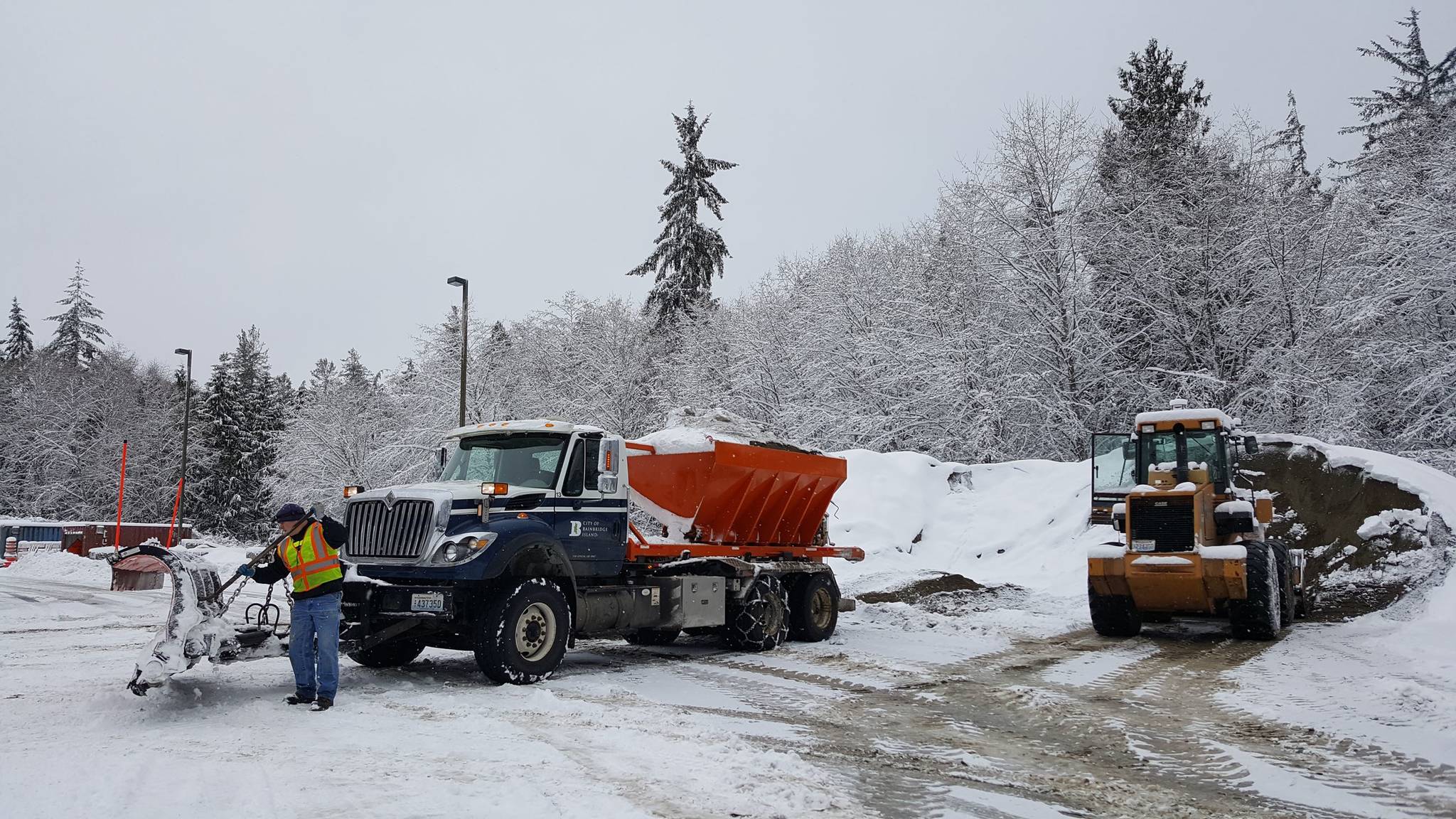The weather may be unseasonably warm lately, but it is December and with winter coming soon and inclement weather probably the city of Bainbridge Island Public Works Department is getting prepared for it.
In November, the Operations and Maintenance staff began snow and ice preparations. The preparations included: Review and maintenance of snowplows, sanders and deicing equipment, review of the procedures and development of tentative shift assignments.
The City Council was presented with a slide show Tuesday night regarding the winter preparations.
The slide shows says a La Nina Winter is expected, meaning wetter, colder weather bringing more rain and snow. Emergency Management coordinator Anne LeSage said the majority of the impact will be from January to March, 2021.
Public Works director Chris Wierzbicki said his staff will be challenged in many ways: Some employees have left and have not been replaced, and there have been more absences this year during COVID. Also, due to the coronavirus there are fewer people in the office. So, he said if a weather event occurs that wasn’t planned for because it wasn’t in the forecast there may not be enough folks available to do the job. “But we’ll do the best we can,” he said.
Also, emergency shelter operations will include COVID restrictions. Sites include Senior Center day and night; Seabold United Methodist Church night only; St. Barnabas Episcopal Church day only; and Island Church as a backup. Poulsbo has one at Gateway Fellowship and Kingston at Village Green Community Center.
LeSage said teams at each site have been trained on COVID protocols, including how many homeless can be safely taken in under coronavirus restrictions. One issue is Kitsap County has reduced its other sites due to COVID concerns so there are fewer options to help local homeless.
She said in general BI tries to open sites any time day or night that the weather temperature is freezing or below for four or more hours.
Mayor Leslie Schneider said a bad weather year on top of COVID is a lot to handle.
“It is what it is, but we’ll cope,” she said.
Snowplow routes
During snow and ice, maintenance activities are prioritized by roads designated as priority 1 and 2. Roads not designated as either are local access or residential streets and are the third priority.
When a typical snow or ice event occurs, Priority 1 routes are handled within the first 36 hours. Priority 2 routes are handled within the 36-72 -hour timeframe. If another event occurs during the first 72 hours, crews return to the Priority 1 routes schedule.
City‐maintained roads are designated primary and secondary based on traffic counts, vehicle types, designated speed limits and the functional class of the road.
Public gravel roads are not plowed or sanded. Private roads are not maintained by city road crews. Residents who live on a private road are advised to work with their neighbors to develop a snow and ice control plan.
The Snowplow Route Map shows the priority plow routes. Red lines indicate primary roads, which provide the highest degree of mobility, serve major centers of activity, and are high traffic volume links between suburban centers and outlying communities.
Crews plow and sand primary roads first and continue until they are clear, then move to secondary roads.
Blue lines indicate secondary roads, which link local communities with primary roads.
Emergency requests can come from police, fire, 9-1-1 and the public. The public is asked not to call Public Works unless it is a true emergency.
The state Department of Transportation takes care of Highway 305.
Chemical anti‐icing
Chemical deicers lower the freezing point of water, allowing lower temperature before ice forms on roads. Chemical application does not guarantee ice‐free roads but can make them safer. The initial application is put on hills, curves, bridges and major arterials and primary roads. The city uses a chloride (salt) brine diluted with water to 23.3% sodium chloride, the safest and most cost‐effective anti‐icing product available.
Sidewalks
Keeping sidewalks free from snow, ice and other obstructions is the responsibility of the person or entity whose property abuts the sidewalk. Only sidewalks on or abutting city property are maintained by city crews.
Wierzbicki said there are volunteers willing to help those unable to do the work themselves.



